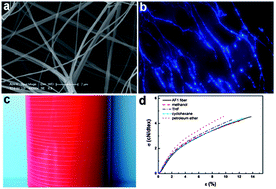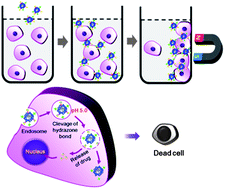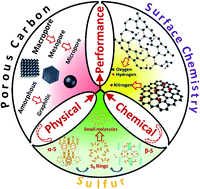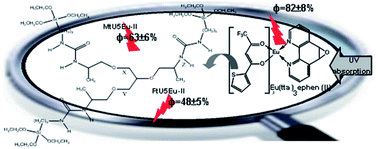This month sees the following Journal of Materials Chemistry B articles that are in the top ten most accessed from July – September:
Carbon “quantum” dots for optical bioimaging
Pengju G. Luo, Sushant Sahu, Sheng-Tao Yang, Sumit K. Sonkar, Jinping Wang, Haifang Wang, Gregory E. LeCroy, Li Cao and Ya-Ping Sun
J. Mater. Chem. B, 2013,1, 2116-2127
DOI: 10.1039/C3TB00018D
Bioinspired prospects of graphene: from biosensing to energy
Ying Wang, Haixin Chang, Hongkai Wu and Honglai Liu
J. Mater. Chem. B, 2013,1, 3521-3534
DOI: 10.1039/C3TB20524J
Hydrogen-bonds in molecular solids – from biological systems to organic electronics
Eric Daniel Głowacki, Mihai Irimia-Vladu, Siegfried Bauer and Niyazi Serdar Sariciftci
J. Mater. Chem. B, 2013,1, 3742-3753
DOI: 10.1039/C3TB20193G
Synthesis of nanoparticles, their biocompatibility, and toxicity behavior for biomedical applications
Anurag Gautam and Frank C. J. M. van Veggel
J. Mater. Chem. B, 2013,1, 5186-5200
DOI: 10.1039/C3TB20738B
One-step preparation of nitrogen-doped graphene quantum dots from oxidized debris of graphene oxide
Chaofan Hu, Yingliang Liu, Yunhua Yang, Jianghu Cui, Zirong Huang, Yaling Wang, Lufeng Yang, Haibo Wang, Yong Xiao and Jianhua Rong
J. Mater. Chem. B, 2013,1, 39-42
DOI: 10.1039/C2TB00189F
Biomineral-inspired growth of metal–organic frameworks in gelatin hydrogel matrices
Ashesh Garai, William Shepherd, Jia Huo and Darren Bradshaw
J. Mater. Chem. B, 2013,1, 3678-3684
DOI: 10.1039/C3TB20814A
Double network hydrogels from polyzwitterions: high mechanical strength and excellent anti-biofouling properties
Haiyan Yin, Taigo Akasaki, Tao Lin Sun, Tasuku Nakajima, Takayuki Kurokawa, Takayuki Nonoyama, Toshio Taira, Yoshiyuki Saruwatari and Jian Ping Gong
J. Mater. Chem. B, 2013,1, 3685-3693
DOI: 10.1039/C3TB20324G
Recent advancements of graphene in biomedicine
Huacheng Zhang, George Grüner and Yanli Zhao
J. Mater. Chem. B, 2013,1, 2542-2567
DOI: 10.1039/C3TB20405G
A bifunctional nanocarrier based on amphiphilic hyperbranched polyglycerol derivatives
Indah N. Kurniasih, Hua Liang, Sumit Kumar, Andreas Mohr, Sunil K. Sharma, Jürgen P. Rabe and Rainer Haag
J. Mater. Chem. B, 2013,1, 3569-3577
DOI: 10.1039/C3TB20366B
Polymeric theranostics: using polymer-based systems for simultaneous imaging and therapy
Theodora Krasia-Christoforou and Theoni K. Georgiou
J. Mater. Chem. B, 2013,1, 3002-3025
DOI: 10.1039/C3TB20191K
Why not take a look at the articles today and blog your thoughts and comments below.
Fancy submitting an article to Journal of Materials Chemistry B? Then why not submit to us today!



















